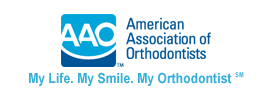Early Orthodontic Treatment
Early Treatment - Also Known as 'Phase I'
The American Association of Orthodontics recommends an orthodontic evaluation between 7 & 8 years of age. The objective of this evaluation is to detect any growth and development factors that will currently or in the future disrupt the normal eruption path for the permanent teeth and/or disrupt the normal balance of the bite relationship of the developing upper and lower jaw structures.
At this stage of childhood the physiologic growth and development process is very active and as such, is responsive to the orthopaedic intervention of any disharmony. This physiologically creates better balance and harmony to the developing jaw structures and thereby improves the eruption process for the permanent teeth.
Early treatment is rarely intended to straighten teeth with orthodontic brackets. While there are some circumstances of disruptive bit relationships that require some orthodontic tooth movement with braces, improvement of the tooth positions in hits phase of treatment occurs physiologically in response to improvement in balance between the developing jaw structures, the neuromuscular envelope of normal function and the emergence of the erupting permanent teeth.
At the completion of the orthopaedic treatment, a retention appliance will be utilized to maintain the balance of relationships established until the succeeding permanent teeth have erupted and an evaluation of conditions can determine if there is a need for orthodontic treatment.
Sometimes, there is no further need for orthodontic treatment. This can not be predicted with certainty. Therefore, realistic objectives of early treatment are to:
- reduce imbalances in jaw structure development affecting permanent tooth eruption
- allow for improved path of eruption for the emerging teeth
- thereby, reduce the complexity of future orthodontic treatment
- reduce the treatment time for any future orthdontic treatment
- improve stability for any future orthodontic treatment necessary
Between Phase
In this phase, the remaining permanent teeth are left alone as they erupt. Retaining devices may not be recommended if they would interfere with eruption. It is best to allow the existing permanent teeth some freedom of movement. A successful first phase will have created room for permanent teeth to find an eruption path. Otherwise, they may become impacted or severely displaced.
Monitoring the teeth's progress
At the end of the first phase of treatment, teeth are not in their final positions. This will be determined and accomplished in the second phase of treatment. Selective removal of certain primary (baby) teeth may be in the best interest of enhancing eruption during this resting phase. Therefore, periodic recall appointments for observation are necessary, usually on a three-to-six-month basis.



